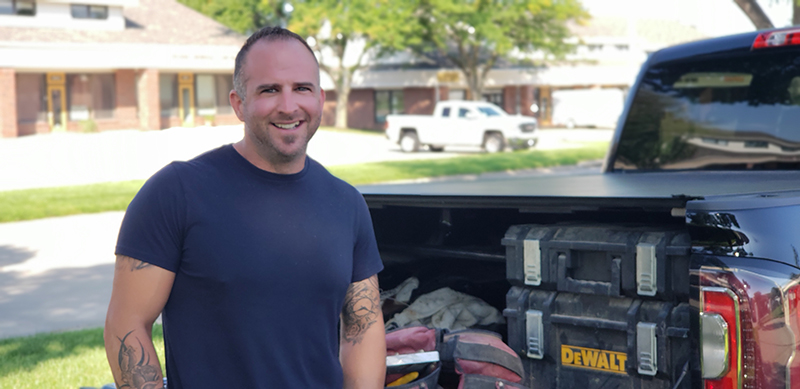
By Benjamin Carey
Today, I am part-owner of a custom design/build company, Build DCB, working with people who want to build their dream home. Our job starts by talking through a concept with our clients, then drawing and designing the plans, followed by estimating the costs and then finally, building the dream. It’s a huge honor to be able to do this for each client, but the path to get to this point starts back in junior high and high school with my industrial tech teacher, Mr. Skiles and Computer Aided Design (CAD) teacher, Mr. Heithold.
When I was in junior high, I took my first shop/industrial tech class. I still remember to this day Mr. Skiles talking to us about what we were going to do that year. At first, all I could think of was how excited I was for a class that should have absolutely no homework whatsoever. That year we were going to be learning how to use all different kinds of equipment and how to create something out of nothing and again, no homework. As he went through the list of things we were going to be doing, one of the assignments was to build a bridge out of balsa wood. At the end of that session, everyone would have their bridge tested under a weighted system to see whose bridge could hold up the most weight before it failed. From that moment on, he had my attention. I was going to get to build something I could see and test how good my creative skills were. He then told me I could take drafting as a freshman and then CAD with Mr. Heithold. That gave me the spark to start down the career path I have chosen today.
From that day forward, I wanted to do something that would involve designing and building things that would stand for years to come and for people to enjoy and use in their daily lives. So, while I was in high school, I decided to focus on architecture because I wanted to draw something up and then see the design come to life, knowing I had made an impact. At the time I didn’t quite realize the level of math that was involved in the architectural/construction world. I would sit in my algebra and trigonometry classes and wonder why on earth are we doing all of these story problems? Who cares about the Pythagorean theorem? Well, I’m glad it stuck in my head, because fast-forward a few years to my first full-time construction job as a framer and it all became very clear to me. Those problem-solving skills I had learned from algebra and the importance of building a house or a commercial building to be square using trigonometry were now being used in real life – exactly what I thought would never happen.
While I was in college for architectural engineering, my objective was to continue working in construction and learn as much as possible about how things were built, and the best methods or practices used. This gave me a real-life understanding of what was being taught in class and the ability to apply it later on in my career.
That is one of my biggest pieces of advice to anyone wanting to get into this industry. Try as many different things as possible. Learn as much as you can from each of the trades, so you can better understand what goes into each home or building project from start to finish. Learn how foundations are laid out and built. Learn how plumbing, mechanical and electrical work is installed. Learn how structural design and floor/roof truss systems are designed and built. Learn how to design, sign and call out for structural steel for buildings, bridges, high rises, etc. Learn computer programing for automated systems of buildings for their lighting, security, heating and air, plumbing and mechanical…regardless of your final construction career, for every process, scope or trade you know outside of your current job, you will better understand how to perform it…and how it helps to create the final structure. For me, I was able to work for a commercial design/build company while attending college and really enjoyed the level of involvement it provided. Design/build companies typically are involved in both the design process and the build process. I liked both, so seeing the design process evolve and then the actual construction take place and come to life excited me most. That’s one of the best things about construction – the visual satisfaction at the end of the day. To be able to stand back and see what you have done, and knowing other people can see, use and appreciate it as well, is one of the best parts of being a builder.
